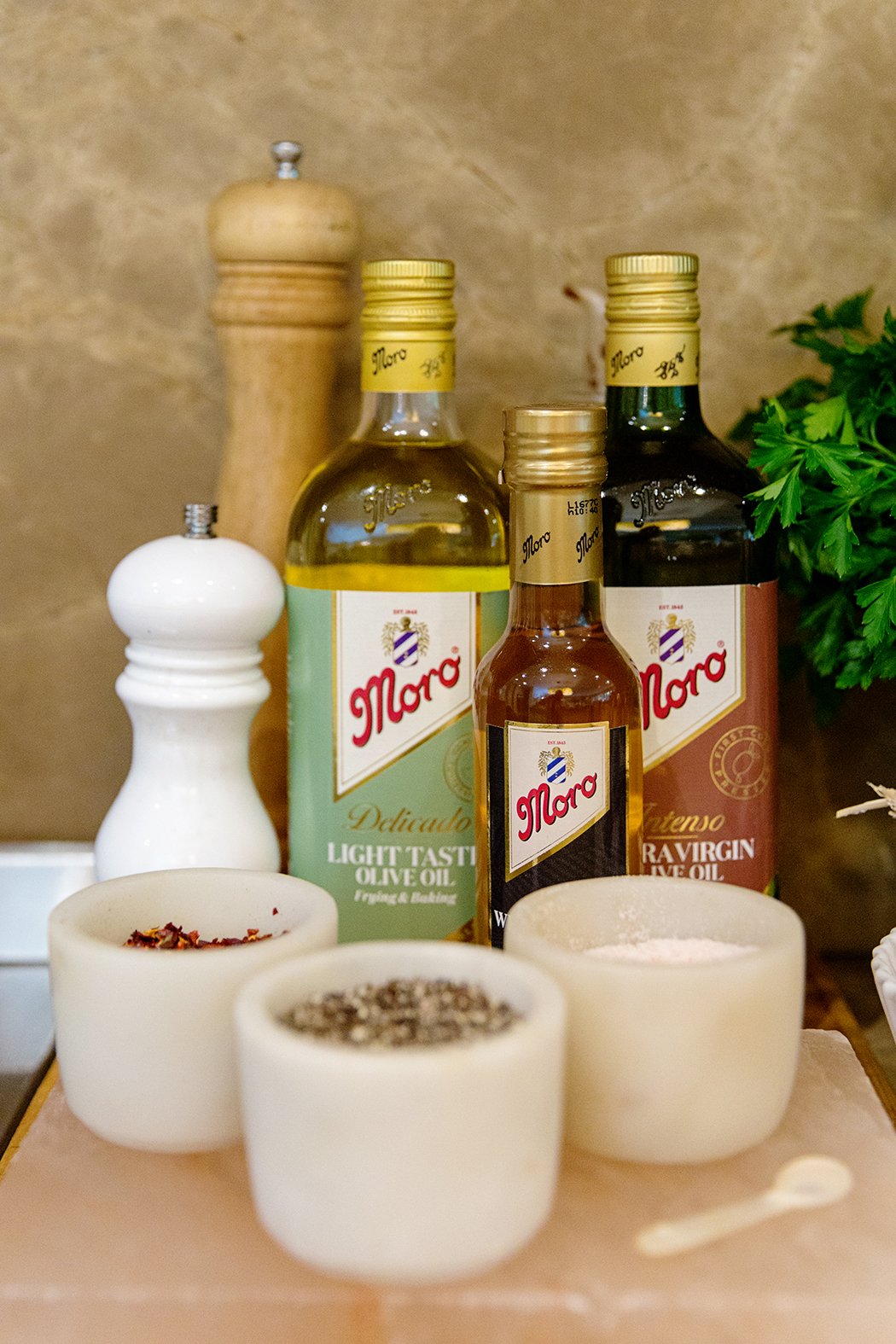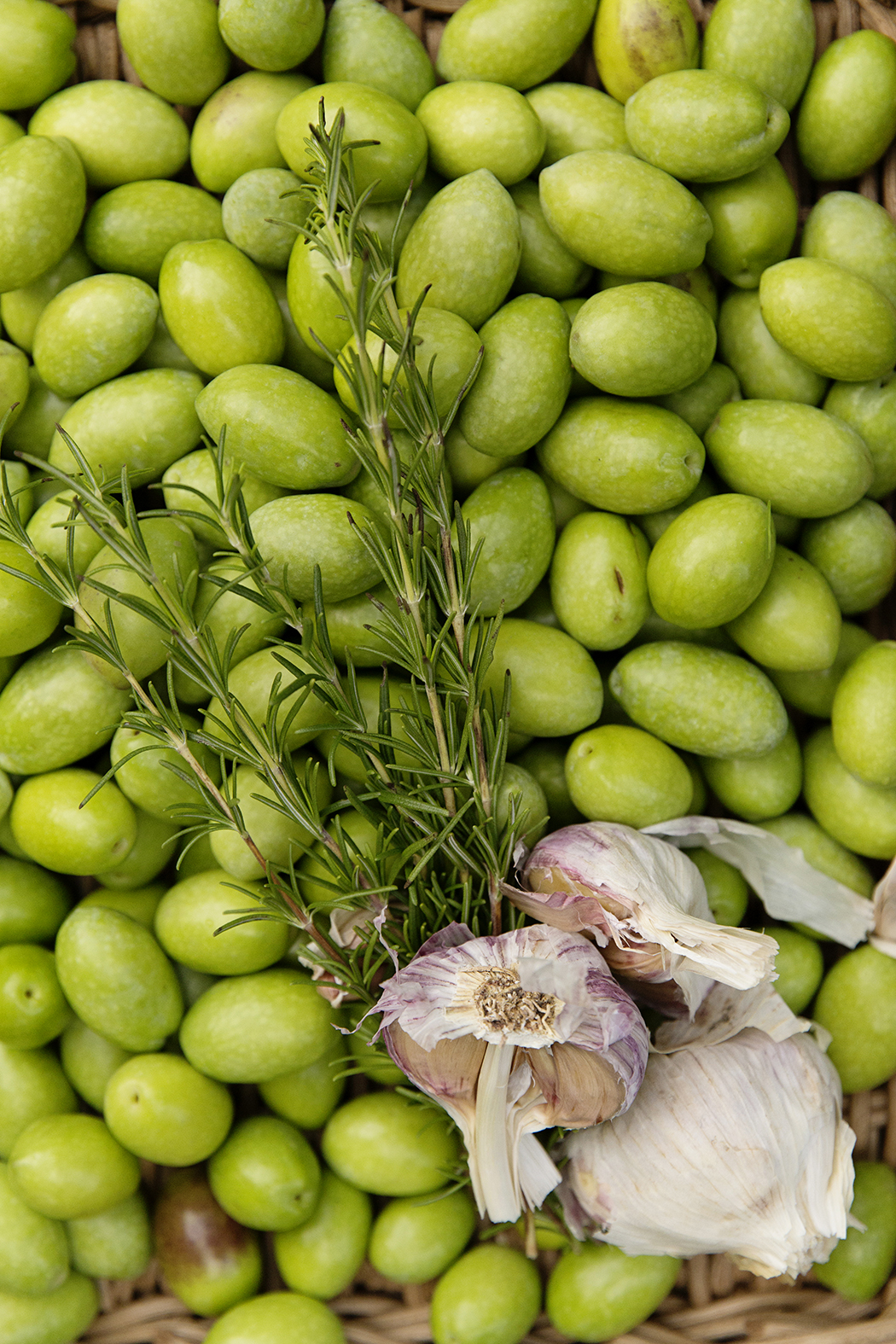Those Who Use Moro Know
WORDS:: CHYKA KEEBAUGH
IMAGES:: LISA ATKINSON
Olive Oil is one of those everyday oils we all have and use and love!
I can’t remember a time when I wasn’t using it for dressings, adding it to my pasta water, dipping my crusty bread in it or even using it in my baking. It is versatile, delicious and comes in a variety of flavours that can enhance the flavours of your cooking.
But with a collection of varietals to choose from comes confusion in the kitchen - what oil is being used for what purpose? Well, let’s chat because those who use Moro know, and I use Moro! The best way to start cooking - really cooking - with olive oil is to think of it as a bottle of wine. There are many different regions, varieties and maturity of fruit and climates that all have an impact on the flavour and aroma of the olive fruit, just like with grapes. Spain is the world’s largest producer of olive oil, with more than 310 million trees and at least 260 different varieties, so it’s an excellent place to start to understand its complexity.
Moro has three extra virgin olive oil varieties that all have different
flavour profiles and can be matched to various dishes...
Frutal Extra Virgin Olive Oil The most delicate of the extra virgin olive oil range, Frutal is fragrant, fruity, and somewhat sweet olive oil. Perfect for drizzling, sautéing and finishing dishes such as seafood and vegetables. It’s also great for dipping with fresh, crusty bread and it’s beautifully drizzled over salad, seafood or white meats.
Primero Extra Virgin Olive Oil Primero is a medium, full-bodied and fruity olive oil, great all-rounder! It’s perfect for drizzling over salads, soups, bruschetta and vegetables or for making sauces, marinades and dressings. You should use it in cooking when you’re looking to add flavour and depth to a dish.
Intenso Extra Virgin Olive Oil Intenso by name - intense by nature! Easily the most robust of the range, with a peppery flavour. This is ideal for the olive oil lover in search of a ‘kick’. It’s the strongest in flavour and ideally suited to hearty stews, casseroles and red meats.
So let’s get creative with our olive oils - there are distinct varieties to choose from so why not take advantage of that? Experimenting in the kitchen is one of the joys of cooking, so experiment with your oils - play with flavours, make the same dish three times using three oils and pick a winner. One of my favourites is a simple olive oil cake, delicious and moist - this cake gets better as it ages, not that it ever lasts!
Deliciously Moist Olive Oil Cake
Ingredients
- 1¼ cups plus 2 tablespoons extra-virgin olive oil; plus more for pan
- 1 cup plus 2 tablespoons sugar; plus more
- 2 cups cake flour
- ⅓ cup almond flour or meal or fine-grind cornmeal
- 2 teaspoons baking powder
- ½ teaspoon baking soda
- ½ teaspoon kosher salt
- 3 tablespoons amaretto, Grand Marnier, sweet vermouth, or other liqueur
- 1 tablespoon finely grated lemon zest
- 3 tablespoons fresh lemon juice
- 2 teaspoons vanilla extract
- 3 large eggs
Method
- Preheat oven to 400°. Drizzle bottom and sides of pan with oil and use your fingers to coat. Line bottom with a round of parchment paper and smooth to eliminate air bubbles; coat parchment with more oil. Generously sprinkle pan with sugar and tilt to coat in an even layer; tap out excess. Whisk cake flour, almond flour, baking powder, baking soda, and salt in a medium bowl to combine and eliminate any lumps. Stir together amaretto, lemon juice, and vanilla in a small bowl.
- Using an electric mixer on high speed (use whisk attachment if working with a stand mixer), beat eggs, lemon zest, and 1 cup plus 2 Tbsp. sugar in a large bowl until mixture is very light, thick, pale, and falls off the whisk or beaters in a slowly dissolving ribbon, about 3 minutes if using a stand mixer and about 5 minutes if using a hand mixer. With mixer still on high speed, gradually stream in 1¼ cups oil and beat until incorporated and mixture is even thicker. Reduce mixer speed to low and add dry ingredients in 3 additions, alternating with amaretto mixture in 2 additions, beginning and ending with dry ingredients. Fold batter several times with a large rubber spatula, making sure to scrape the bottom and sides of the bowl. Scrape batter into prepared pan, smooth top, and sprinkle with more sugar.
- Place cake in the oven and immediately reduce oven temperature to 350°. Bake until top is golden brown, the centre is firm to the touch, and a tester inserted into the centre comes out clean, 40–50 minutes. Transfer pan to a wire rack and let the cake cool in pan 15 minutes.
- Poke holes all over the top of cake with a toothpick or skewer and drizzle with remaining 2 Tbsp. oil; let it absorb. Run a thin knife around edges of cake and remove the ring from pan. Slide cake onto rack and let cool completely. For the best flavour and texture, wrap the cake in plastic and let sit at room temperature at least a day before serving.
Do Ahead: Cake can be baked 4 days ahead. Store tightly wrapped at room temperature.
Creative Ways to Use Olive Oil in Your Meals…
- Swap your butter for oil, if your recipes call for a nob of butter - try olive oil and taste the difference.
- Pour a glug on your morning yoghurt for a bit of morning decadence, top with berries for a fruity punch or nuts for a more savoury option.
- Fruit salads can also be drizzled with oil, it will enhance the flavours.
- Don’t forget to add a little bowl of oil to your cheese platter, it’ll make the flavours of your cheese so much yummier.
- Olive oil in cakes will keep your cake fresher longer, the oil content will keep it moist and delicious.
Keep your oils within reach when you cook, they are not just for frying and sautéing they can be used for everything. It is important as to not keep them too close to a heat source, you want your oil quality to remain the same and not be compromised by heat. So let's start cooking before I get started on ways to clean your home with olive oil...!








